The world of fashion is rich with luxurious fabrics and materials, but few hold the same esteemed status as cashmere. A true embodiment of opulence and comfort, a cashmere scarf is not merely an accessory; it's a statement of refined taste and a testament to the marvels of nature's finest fibers. Among the array of cashmere varieties, one stands out as a true gem: Ladakhi Cashmere processed in Kashmir.
Ladakh - the source of the finest Cashmere
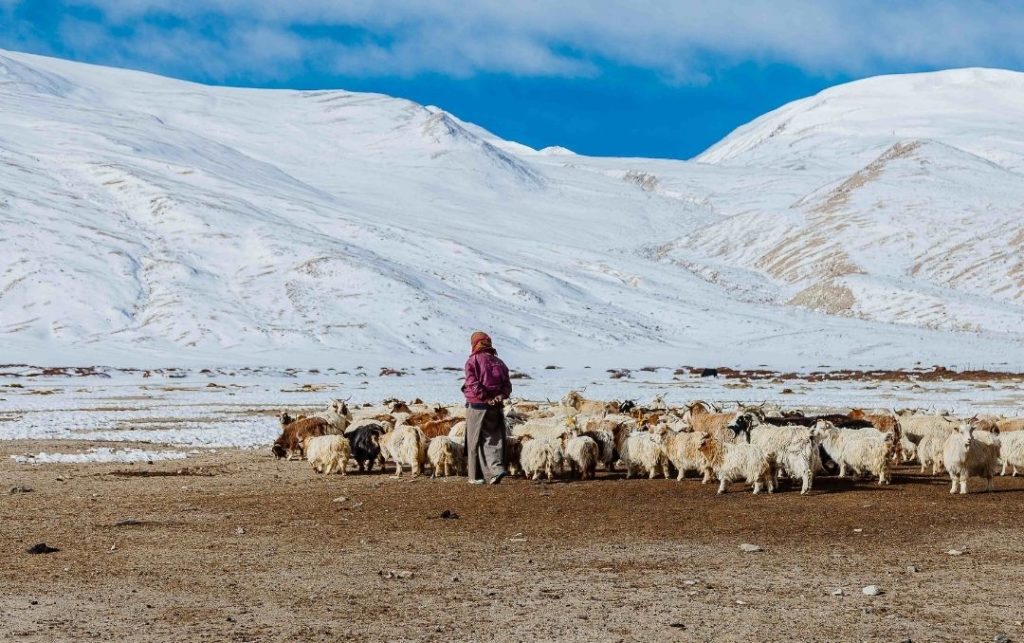
Ladakh is a region nestled in the northernmost part of India. It is, furthermore, famous for its breathtaking landscapes, serene monasteries, and vibrant culture. Yet, it is not only its scenic beauty that draws attention but also its prized cashmere. Ladakhi Cashmere, which herders obtain from the soft undercoat of indigenous goats, is unique. It is deeply tied to its environment. The harsh and extreme weather conditions Ladakh experiences play a pivotal role in shaping the characteristics of this exceptional fibre.
Ladakhi Cashmere, sourced from the rugged landscapes of Ladakh, is a testament to the resilience of nature and the artistry of the local communities. The place boasts harsh winters that test the endurance of its inhabitants. In response to the demanding climate, the cashmere goats in this region have developed an exquisite undercoat. In fact, this fine protection acts as a natural shield against the cold. This undercoat, finer and softer than even the finest human hair, is the foundation of Ladakhi Cashmere. And it is the source of the sought-after Ladakhi Cashmere. Artisans painstakingly comb the fibres during the molting season, yielding a limited yet precious supply. Each fiber is a testament to the goat's resilience and nature's ability to create something extraordinary. And this takes place even in the harshest of circumstances.
Processing of Ladakhi Cashmere
However, the journey from Ladakh's remote landscapes to becoming the embodiment of warmth and elegance in the form of a cashmere scarf doesn't end there. The processing of Ladakhi Cashmere takes place in the enchanting region of Kashmir. Often called the "Paradise on Earth," Kashmir is additionally famous for its rich cultural heritage and breathtaking scenery. Moreover, it is world famous for intricate craftsmanship.
Kashmiri artisans possess mastery over the art of transforming raw Ladakhi Cashmere into Pashmina. Exquisite Pashmina shawls scarves that envelop one in a cocoon of comfort are crafted from Cashmere. The craftsmanship involves intricate weaving techniques that have been passed down through generations. Clearly, each thread is woven with dedication and love for the art. Undoubtedly, the process is as much a labor of love as it is a celebration of nature's bounty.
Also read: PASHMINA - THE QUALITY OF EACH YARN DEFINED
The Process
Pashmina Collection and Sorting
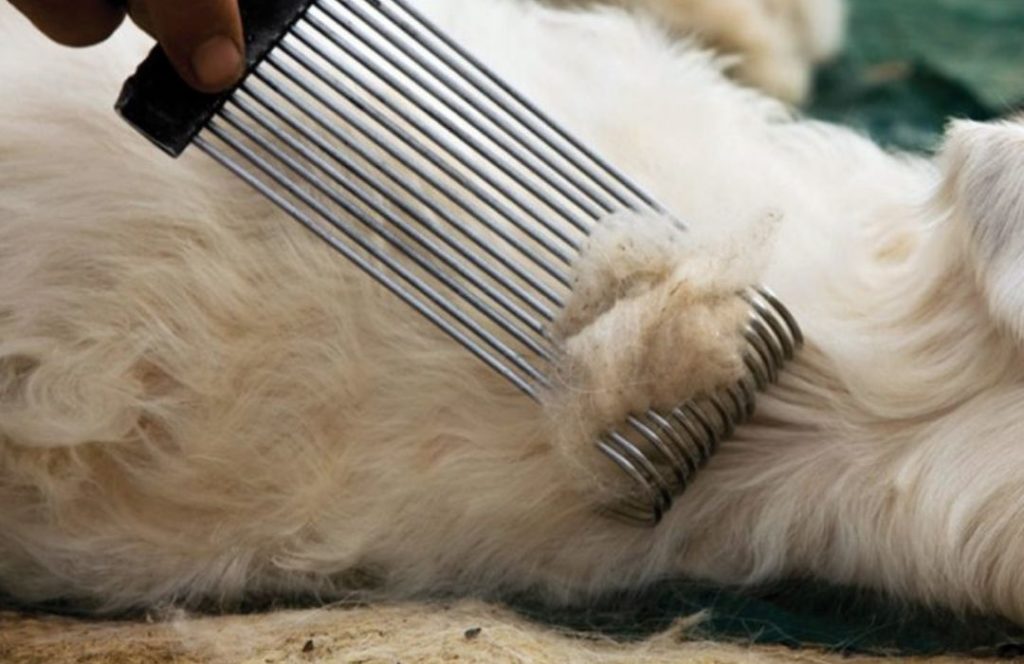
The process begins in Ladakh, where goats naturally shed their winter undercoats as the weather warms. Herders collect the finest fibres through a combination of combing and gentle hand-plucking. Importantly, they ensure that only the softest and highest-quality fibres remain for the next steps.
Cleaning and Washing
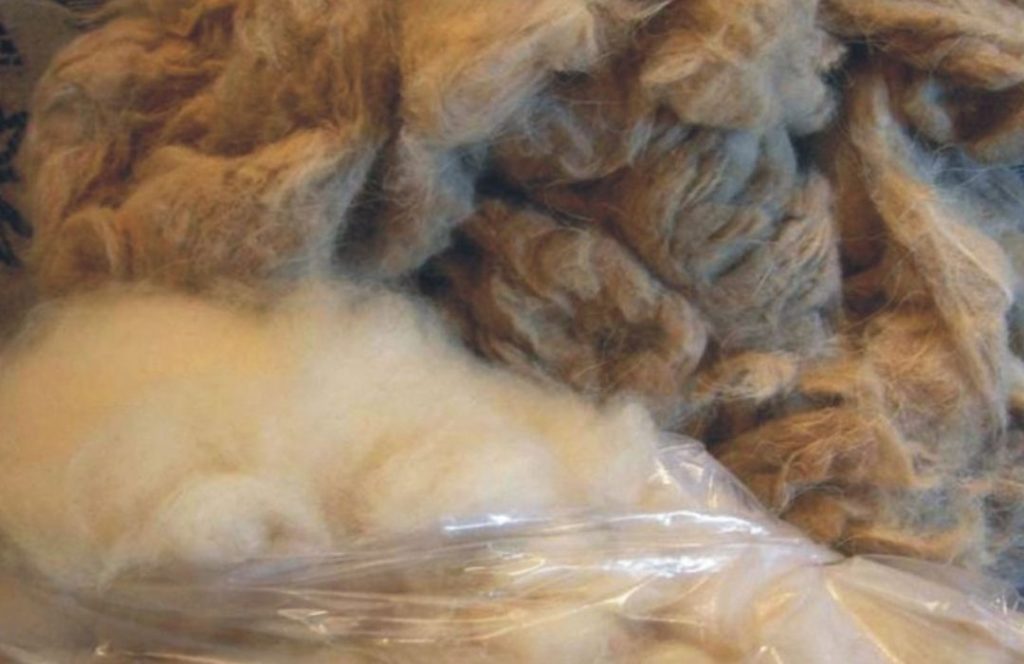
Artisans then thoroughly clean the collected fibres to remove any impurities, dirt, or natural oils. This is a delicate process, as the fibres are extremely fine and fragile. Consequently, proper cleaning is essential to achieve the desired softness and purity of the Pashmina.
Dehairing
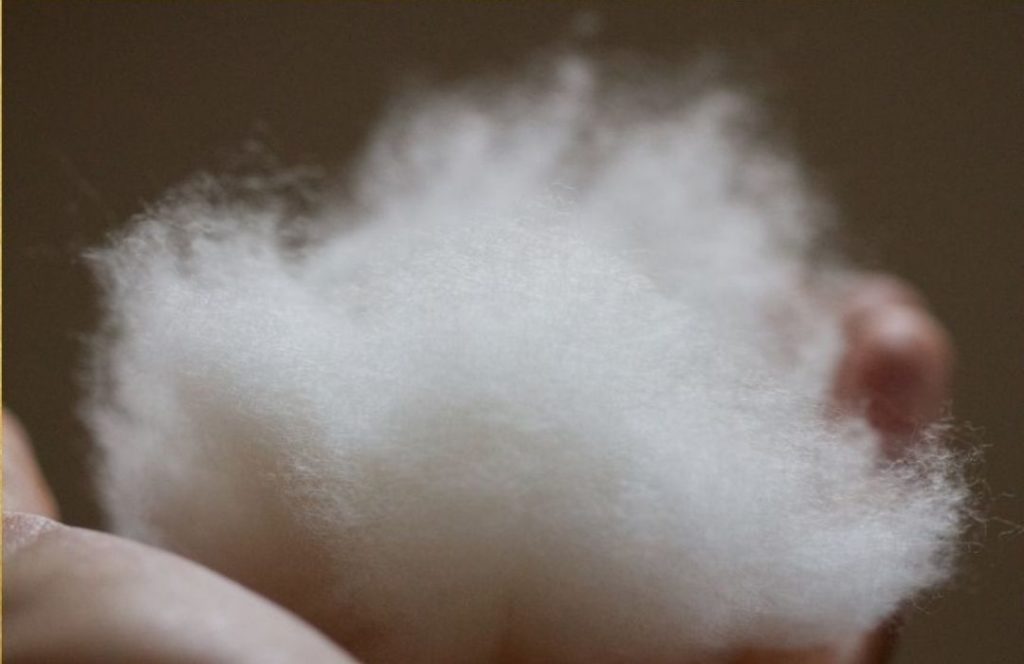
Once cleaned, the collected Pashmina fibres undergo a dehairing process. For this reason, only skilled artisans contribute, and carefully separate the coarse guard hair from the ultra-fine undercoat. Clearly, this process requires precision and expertise to ensure that only the softest and finest fibres remain.
Spinning
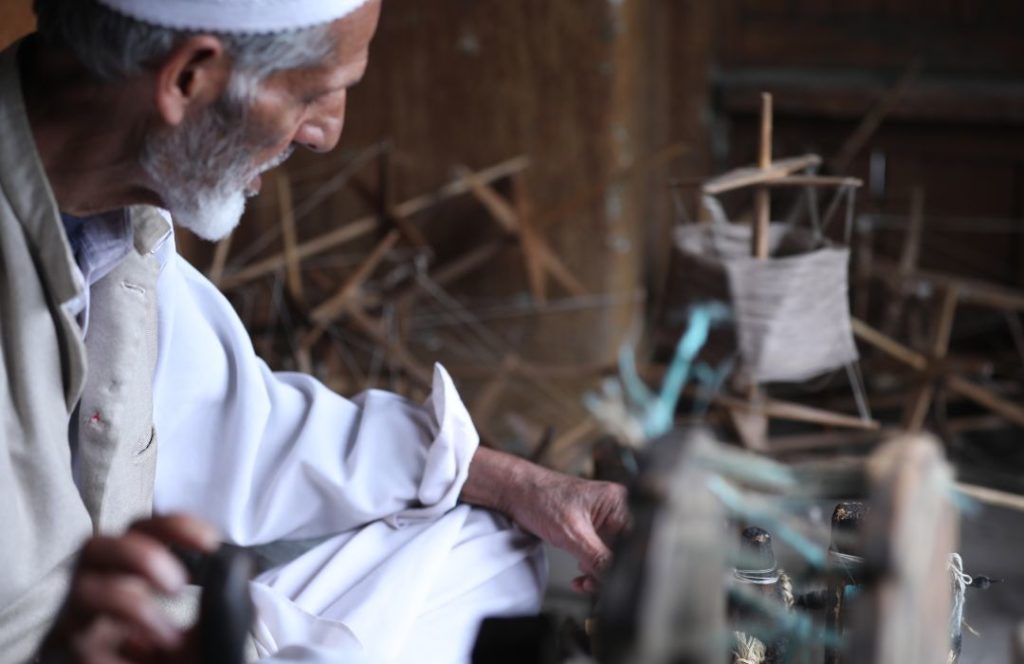
Artisans, later, spin dehaired fibres into yarn. They do this by hand using a spinning wheel/yinder. Women artisans from Kashmir Valley complete this task with finesse and precision. The resulting Pashmina yarn is, unquestionably, incredibly fine and delicate, setting the stage for the weaving process.
Dyeing
Before weaving, artisans dye the yarn to achieve the desired colors. They use natural dyes sourced from plants, minerals, and other organic materials. They do this to maintain the authenticity of the Pashmina. The dyeing process is, indeed, another skillful art. This is because achieving consistent and vibrant colors requires experience and precision.
Weaving
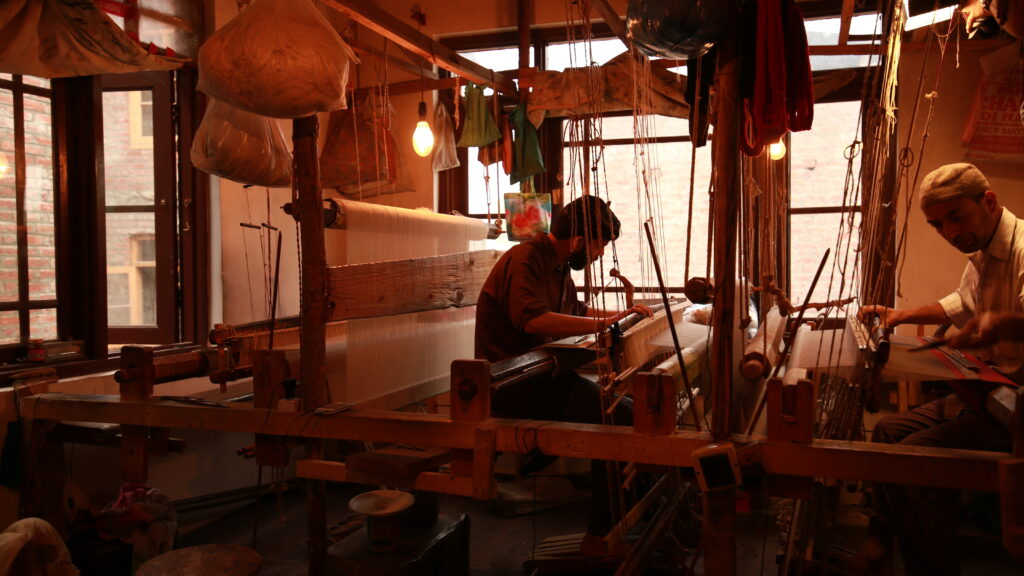
Weavers meticulously weave the dyed yarn now over wooden handlooms. Intricate patterns and designs, thus formed, are characteristic of Pashmina shawls. Only skilled weavers employ traditional handlooms. They use their expertise to create unique and stunning motifs. The weaving process can be time-consuming, especially for elaborate designs.
Cashmere and Pashmina
The synergy between Ladakhi Cashmere and Kashmiri Pashmina craftsmanship is a harmonious blend of two distinct yet complementary elements. Ladakhi Cashmere brings its unrivaled softness, warmth, and insulation properties, while Kashmiri artisans infuse their expertise to create scarves that are not just garments, but expressions of an enduring tradition. The scarves, dyed in a myriad of colors inspired by the vibrant culture and landscapes of Kashmir, become works of art. These artful pieces transcend mere utility.
Wearing a Ladakhi Cashmere scarf processed in Kashmir is not just about keeping warm; it's about enveloping yourself in a tale of nature's ingenuity and human creativity. It's a way of carrying a piece of Ladakh's rugged terrain and Kashmir's artistic legacy with you, wherever you go. Tt's an experience that encapsulates the essence of luxury. The scarf's softness against your skin is a reminder of the goats' adaptations to the harsh Himalayan winters. Its lightweight feel defies its incredible warmth, as the fine fibers trap heat to create a cocoon of comfort. Wearing a Ladakhi Cashmere scarf is akin to carrying with you a piece of history, a touch of nature's brilliance, and the dedication of skilled artisans.
Concluding
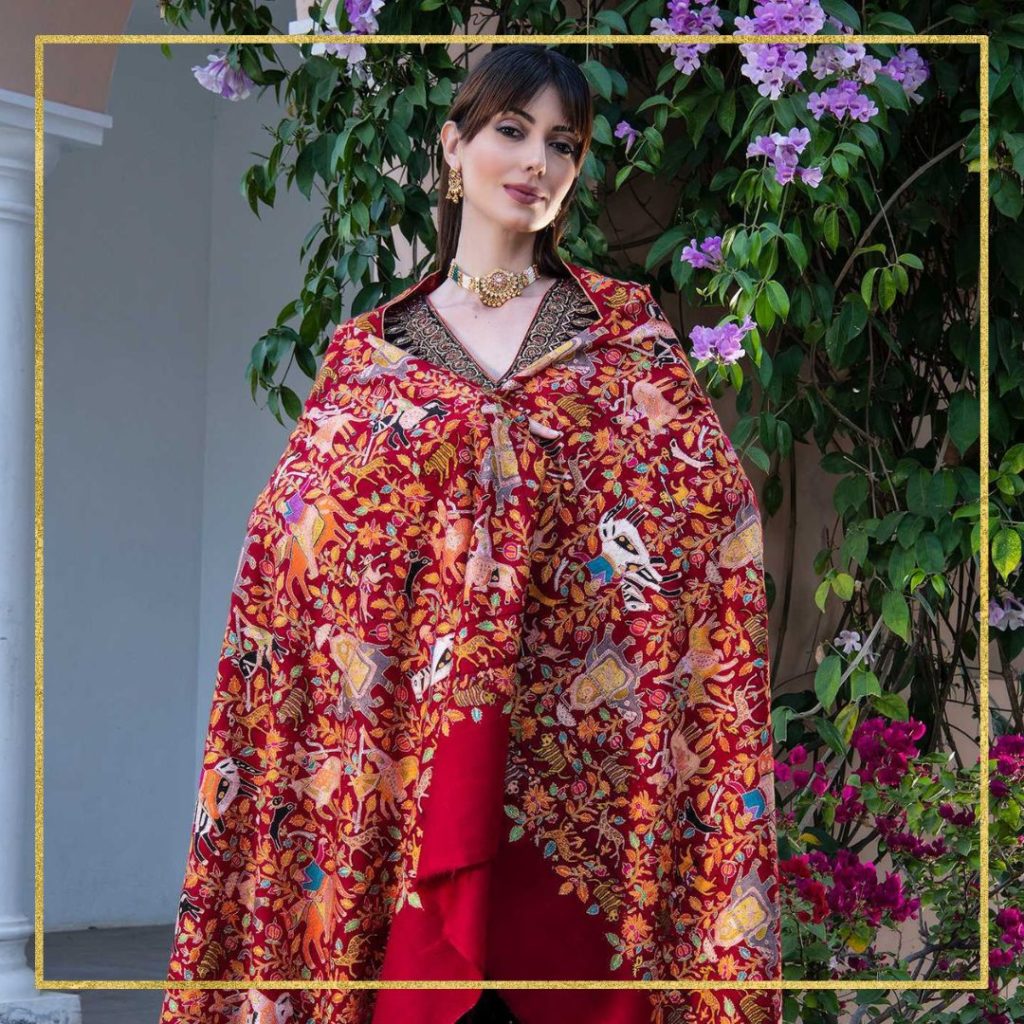
Furthermore, the ethereal beauty of Ladakhi Cashmere and the artistry of Kashmiri craftsmanship seamlessly match sustainability and ethical practices. The careful and respectful extraction of cashmere from Ladakh's goats ensures the delicate balance of their ecosystem safeguards. Additionally, the support for Kashmiri artisans contributes to the preservation of a traditional craft that the modern world is trying to do away with.
The best cashmere scarf is one that artisans handcraft from Ladakhi Cashmere and process in Kashmir. It embodies the harmonious blend of nature's gifts and human artistry, capturing the essence of two culturally rich regions. A Ladakhi Cashmere scarf not only provides unparalleled warmth and comfort but also tells a story—a story of resilience, tradition, and the beauty that emerges when nature and human skill unite in perfect harmony. Wearing such a scarf is not just a fashion statement; it's a conscious choice to embrace the extraordinary and support the timeless craft of Kashmiri artisans.
Also read: HOW ARE CASHMERE SCARVES CRAFTED?